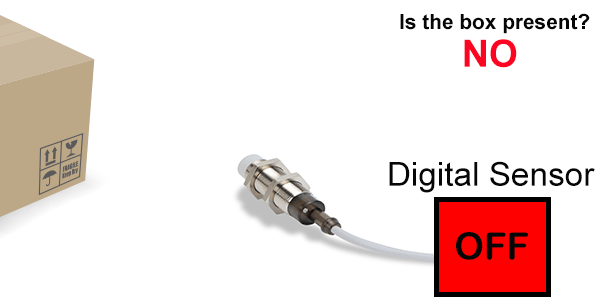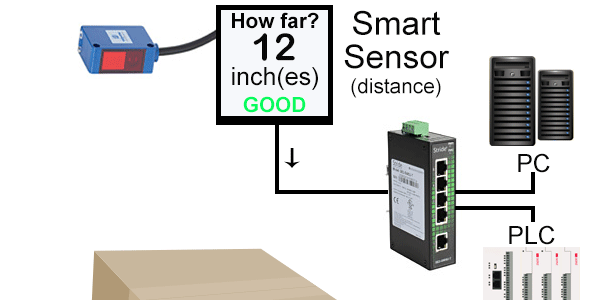For a PLC to monitor and in turn control its application variables, there must be a way for it to sense its surroundings. In today’s industrial realm, there are a huge variety of electrical sensors that provide the input data (position, distance, level, flow, etc.) that control systems need. These basic sensors can be broken up into two main categories: digital or discrete and analog.
Is it, or is it not?
For the simple question of does a condition exist (Is the box present? Is the tank full? Is the door open?) digital sensors can provide the PLC with the Yes, No answer it needs. These sensors supply an ON or OFF signal to the PLC based on whether the condition is met or not, and is usually comprised of solid-state transistors for DC versions or triacs for AC versions. Examples of digital sensors, often used in object detection applications, are photoelectric and proximity sensors.

But how much?
If you need to know how much, or how far, or how full, etc., analog sensors are the answer. Analog sensors/transducers provide the data between the full ON and full OFF states of digital sensors – varying their outputs as the condition they are sensing varies. Analog sensors take a physical quantity like pressure and convert it to an electrical signal with typical analog signals ranging between 0-10VDC or 4-20mA. One way this conversion is accomplished is by using the physical quantity to control the resistance in the electrical circuit. For example, in pressure transducers that use strain gauges, as pressure is applied to the gauge the resistance in the circuit goes up and the supplied voltage or current level changes. An analog laser distance sensor is another example, but this sensor varies its output not based on resistance but based on laser reflection times.

Smart Sensors
Another type of sensor that is being used more and more today is the smart sensor. The Industrial Internet of Things (IIoT) is one of the driving factors of smart sensors in modern applications. Smart sensors do more than just condition sensing. They can also self-diagnose and provide sensor status information, fault detection, etc. For example, besides the distance detection function, a smart laser distance sensor could signal when there is too much dirt on the eye, whether it is out of tolerance or if its internal mechanisms have failed. Smart sensors also use network connections, so any networked PC or controller has the data available.

For more on sensors and many other PLC topics, visit our FREE Online PLC Training Portal to take advantage of Interconnecting Automation’s online PLC video training series.
To read more articles about programmable control, click here.
Originally Published: February 2019


